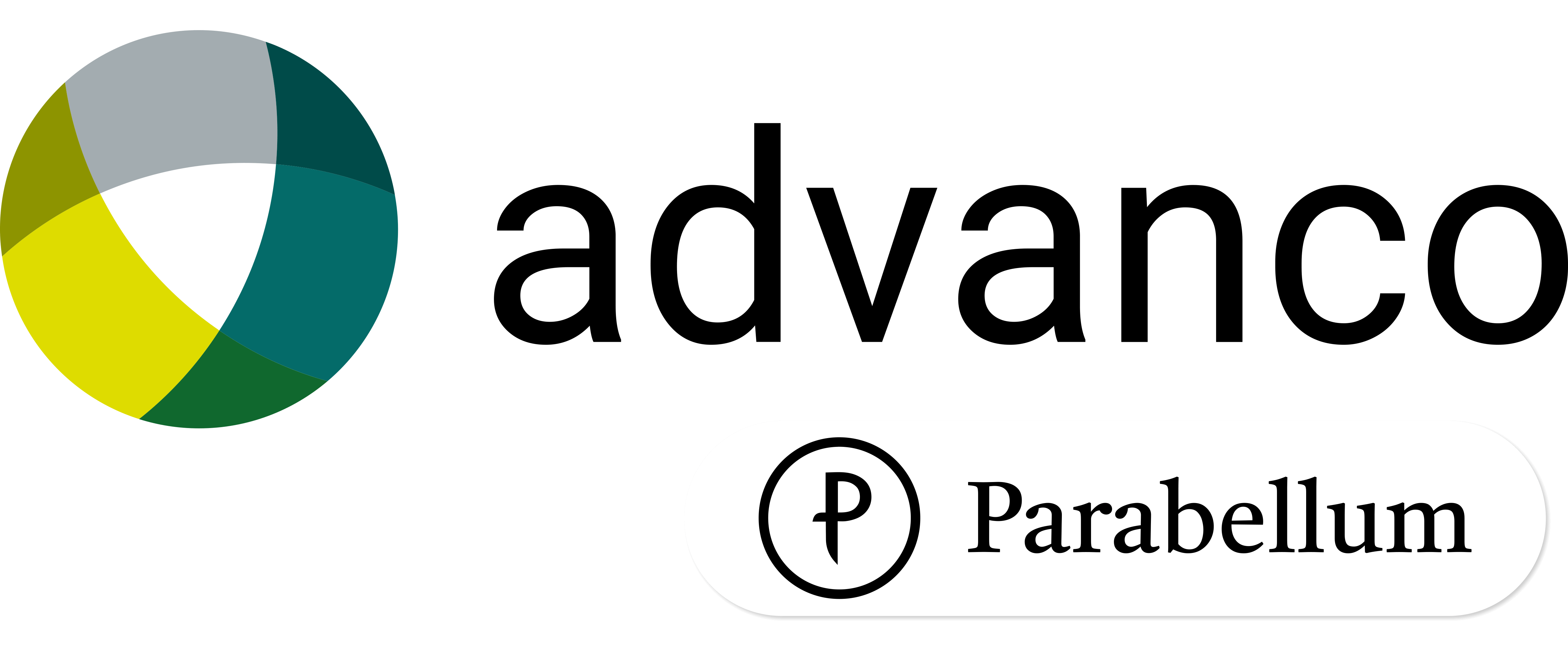Advanco and the Future of Serialization
The importance that serialization is set to play as a core part of the future of the global pharmaceutical industry is well noted.

By anyone’s standards, the future of the sector looks promising. Statistics show that in 2022, the global pharmaceutical serialization market was worth USD $15.1 billion. However, thanks to an impressive predicted CAGR of 5.1% from 2023 to 2031, it is expected to exceed USD $24.8 billion by 2031.
Let’s look at the reasons behind this expected growth – and the role that advanco is set to play within it.
Increased regulatory standards
Arguably the chief reason for the growth of the serialization sector is the strict, non-negotiable regulatory environment across the globe.
Indeed, pharmaceuticals is arguably one of the most heavily regulated industries on the planet. The reason for this is because governments across all four corners of the planet understand that serialization is the most effective weapon that can be deployed against those who manufacture fake medicines.
Within our sector, the forgery statistics are well-known, but for anyone who does not already see the impact that forgers are having, the World Health Organization asserts that roughly 10 percent of medical products circulating in low- and middle-income countries are substandard or falsified. Nearly half a million people are estimated to be killed by counterfeit medicines in sub-Saharan Africa every year, according to data from the United Nations Office on Drugs and Crime. Of these, 267,000 deaths are believed to be linked to falsified or substandard antimalarial medicines, while a further 169,271 are linked to falsified or substandard antibiotics for severe pneumonia in children.
Therefore, it is perhaps not surprising that governments across the world are now acting to prevent criminals causing such destruction.
More countries are realizing the importance of regulating their pharmaceutical production process, and much like a snowball effect, momentum is gathering. With the EU Falsified Medicines Directive (FMD) coming into effect in February 2019 and the US introducing legislation in November 2017, as part of the Drug Supply Chain Security Act (DSCSA), it’s expected that more than 75% of global medicines were covered by some form of track and trace regulations by 2019 – a figure that is constantly growing.
Serialization as an ESG driver
The pharmaceutical sector is coming under increasing pressure, in line with multiple other sectors, to ensure its ESG credentials are watertight.
Recent years have witnessed a huge shift in public pressure, fuelled by some very high-profile individuals and pressure groups, to force corporates of all sizes to ensure they are demonstrating greater levels of sustainability and a to significantly reduce their levels of waste and do not over-produce goods that cannot be used or sold. Watertight serialization procedures ensure that accurate inventories can be maintained, ensuring that pharmaceutical manufacturers can match their output directly with what is needed. Therefore, serialization solutions are increasingly being seen as a driver of vital pharmaceutical ESG standards – something the eyes of the world are increasingly expecting to see.
Operational efficiency
One of the holy grails for any business, the pharmaceutical sector included, is the ability to ensure they are benefiting from operational efficiency.
A lucrative combination of ever-evolving serialization technology against the hyper-connected backdrop of Industry 4.0. is presenting a golden opportunity for pharmaceutical firms to completely overhaul their often-antiquated systems, relics from the past that are often directly preventing them from performing at their optimum output level.
This is where a watertight track and trace system will really shine, streamlining the essential components that modern pharmaceutical businesses need to thrive. These components include operational shopfloor efficiency, greater warehouse automation, generating more data which will further optimize the supply chain, and creating customer engagement through product identification.
Advanco and the future of serialization
We have seen that there are various reasons why the demand for serialization solutions is expected to experience a sharp upward trajectory in coming years.
However, serialization solutions are only as a good as the technology that powers them. This is where the ability to push the boundaries and excel in technological excellence will allow certain companies to continue leading the way – and we are confident that advanco will sit squarely as a recognized global serialization pioneer.
We long recognised that Industry 4.0. would lead to endless operational efficiencies for the pharma sector. Now that Industry 4.0. is arguably already here, we have been proved correct. The evidence for this is all around us, with many functions already being carried out by robots, all powered by the cloud. Advanco’s ARC Cloud recognises this, designed specifically to provide supply-chain level data exchange without compromising on-premises level reliability. ARC Cloud marries strong site management features with the capability to coordinate multiple supply chain partners in the cloud platform.
Indeed, with the advancement of cloud-based applications, data storage is no longer such a big challenge as it was in the past and is no longer a barrier to future innovation when it comes to the historical problems previously associated with storing and exchanging large volumes of data.
However, it is far too futuristic to simply say that the future will all be about robots. Yes, they will have a role to play – but advanco stands squarely behind its view that there will always be a need for human intervention. While the bosses of pharmaceutical forms might wish for a fully autonomous workforce, one that requires zero wages or staff benefits to be paid, we see the future of serialization characterised by a hybrid model of working. A hybrid cloud model is a mixed computing environment where applications are run using a combination of computing, storage, and services in different environments. This might include public clouds and private clouds, including on-premises data centres or “edge” locations.
Indeed, a hybrid model such as this is likely to provide the biggest guarantee to packaging departments that production is likely to continue in the face of problems that could crop up anytime, such as the ever-present potential for a power outage. A practical example of this would involve small appliances, capable of powering the packaging machines during an offline period, including a UPS battery backup. When the systems are back online, records are transferred to the cloud.
This hybrid model will also come into its own when it comes to security. An on-premises appliance will function solidly as a security gateway between the packaging line and the cloud.
Even when it comes to robotics, we are likely to see robots designed to interact physically with humans in collaborative environments. Working alongside people, they will increasingly become key to optimising production and saving employees from doing monotonous and dangerous tasks.
We have already looked briefly at ESG as a driver of serialization earlier in this article. However, it is again worth emphasising that in this rapidly evolving landscape, track and trace systems offer significant opportunities for reducing carbon footprints in packaging processes. By optimizing supply chain logistics and enabling efficient resource utilization, these systems contribute to sustainable practices, minimizing energy consumption, waste generation, and carbon emissions. This focus on environmental responsibility aligns with the growing demand for eco-friendly packaging solutions.
Sustainable packaging materials and technologies will play a crucial role in the future of serialization technology. As environmental concerns grow, the industry is embracing innovative solutions. Bio-based and biodegradable packaging materials, along with recyclable and compostable options, are gaining prominence. Advanced technologies such as smart packaging, incorporating sensors and IoT connectivity, will enable better tracking, quality control, and waste reduction throughout the supply chain.
These sustainable advancements will enhance the efficiency and environmental footprint of serialization processes.
Conclusion
Serialization solutions are expected to see a huge demand in the coming years.
Many external drivers, such as increased regulatory standards, a need to invest in ESG levels and an ever-present desire to maintain operational efficiency are among the reasons for why this growth will take place.
However, to take full advantage of this industry backdrop, firms such as advanco will need to be both proactive and reactive. By proactively designing and predicting the systems that will be needed by the pharma sector of the future, advanco has demonstrated its credentials as an industry pioneer. However, we have done this while reacting to the bigger picture of Industry 4.0. and other external factors, all of which have provided challenges, yet opportunities in abundance.
The future is bright for the serialization sector. However, firms such as advanco cannot sit back and wait for the opportunities to come to them. A combination of industry experience, forward-looking thinking, technical excellence, and the ability to continually push the boundaries will ensure that some firms will shine brighter than others.



